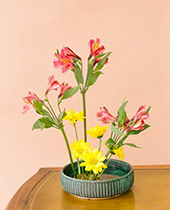Ikebana (生け花, “living flowers”) is the Japanese art of flower arrangement, also known as kadō (華道, the “way of flowers”). It’s as much about philosophy as it is an art form. It is also one of the three classical Japanese arts of refinement, along with kōdō for incense appreciation, and chadō for the tea ceremony.
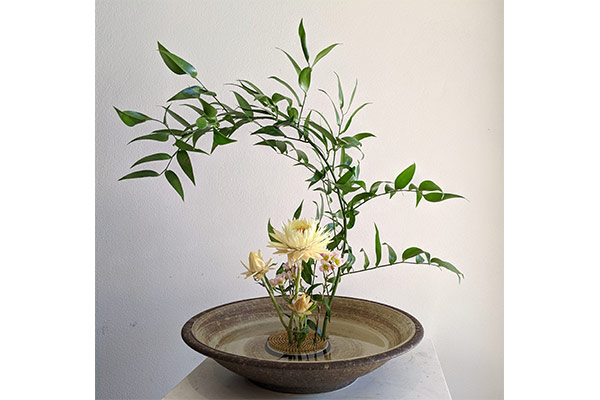
In the 7th century, when Buddhism came to Japan, flowers were regularly left as offerings. When it was decided that these flowers deserve more time and thought, ikebana was born. The first ikebana school was established in Kyoto the 1500s, called Ikenobo. As time went by, the art form moved out of its religious context and up until the 1930’s, it was reserved for the upper class. Today, the interest is much more widespread and there are more than 3000 schools to train and certify ikebana masters in Japan, and thousands more worldwide.
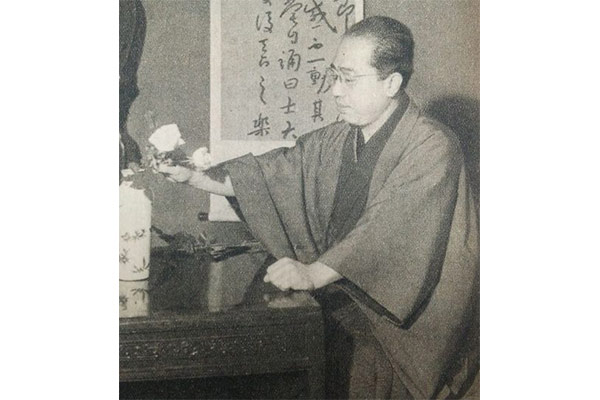
It is believed that all of Japan’s most celebrated generals have been masters of this art, finding that it calmed their minds and made clear their decisions for the field of action.
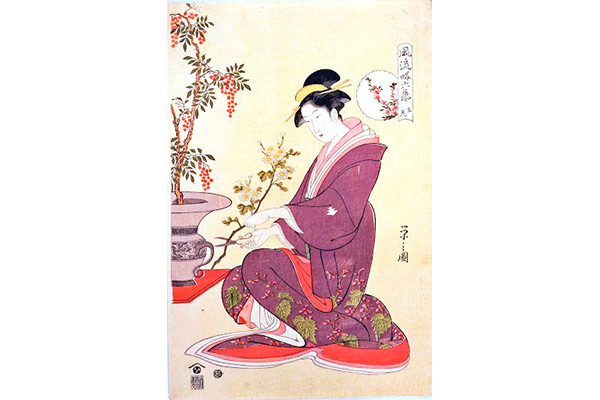
Elements of an ikebana arrangement can be visually broken down. The shushi are the three main branches - the shin (truth) branch, the soe (supporting) branch and the hikae (moderating) branch. Arrangements are made with Hanakotoba in mind, the Japanese form of the language of flowers. One must know these meanings to tell their story. Be careful, because while white lilies convey purity and tiger lilies convey wealth, but orange lilies convey hartred/revenge!

Sōfu Teshigahara (1900-1979) was the
founder of the Sōgetsu-ryū school of ikebana
It is believed that all of Japan’s most celebrated generals have been masters of this art, finding that it calmed their minds and made clear their decisions for the field of action.

Elements of an ikebana arrangement can be visually broken down. The shushi are the three main branches - the shin (truth) branch, the soe (supporting) branch and the hikae (moderating) branch. Arrangements are made with Hanakotoba in mind, the Japanese form of the language of flowers. One must know these meanings to tell their story. Be careful, because while white lilies convey purity and tiger lilies convey wealth, but orange lilies convey hartred/revenge!
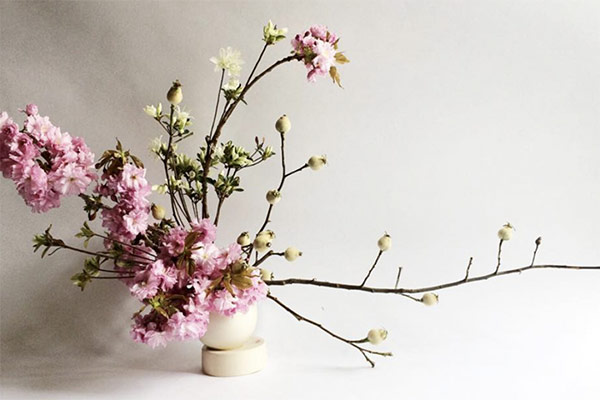
The 7 principles of ikebana are:
Silence… This is an artform associated with a meditation and ceremony.
Minimalism… That’s where the Buddhist influence comes in.
Shape and line… Shoud be minimal, natural, and graceful.
Form… Is found in nature, rather than planned.
Humanity… Your emotions guide your choices. Let the flowers convey what can’t be spoken.
Aesthetics… Japanese aesthetics are a must. Be sure to reflect the current season.
Structure… Is that of a scalene triangle delineated by three main points which represent ten (heaven), chi (earth) and jin (man).
Feeling inspired? Here’s a step-by-step guide:
- Find a quiet, calm space to gather your materials and sit in a chair to begin your practise.
- Start with a shallow vessel and add a kenzen or floral foam for supporting stems.
- Arrange flowers in odd numbers only and in order of height to create depth in a small area.
- The primary stem is the tallest, the secondary stem should be three-quarters the height of the first stem, and the last should be half the size of the initial stem.
- Play around with it until it’s balanced and pleasing. Follow your intuition.
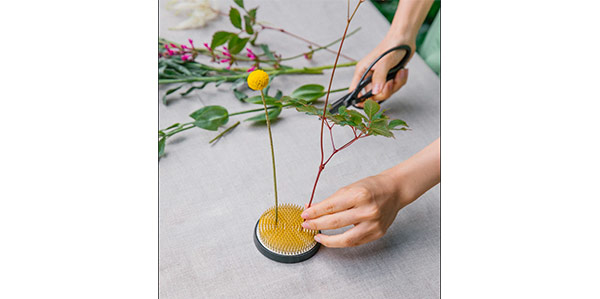
Using a kenzen
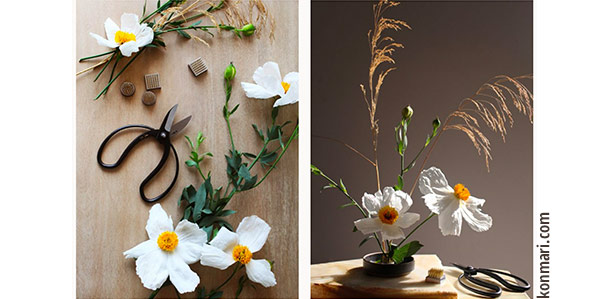
Before and after
The best part: If a petal happens to fall into the water, then so be it. It's all part of the Japanese notion of wabi-sabi, the Buddhist belief that there's beauty in imperfection.
With this spirit in mind, I attempted two arrangements on my own using plants foraged from my garden in late fall. I wasn’t equipped with an opaque shallow vase or kenzen, so a coffee mug and hidden tape inside helped me with positioning. Not bad for a first try!
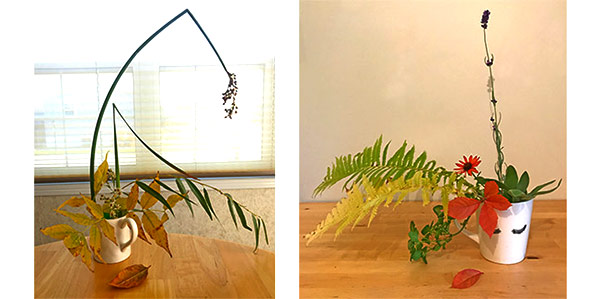
If you’re inspired by Japanese aesthetic, I encourage you to learn more about our inspiring fall 2022 tour to Japan, Everyday Beauty: Japanese Art and Culture led by Sean Forester. You’ll discover more about ikebana, as well as other Japanese art forms like calligraphy, ceramics, textiles, and more. Click here.
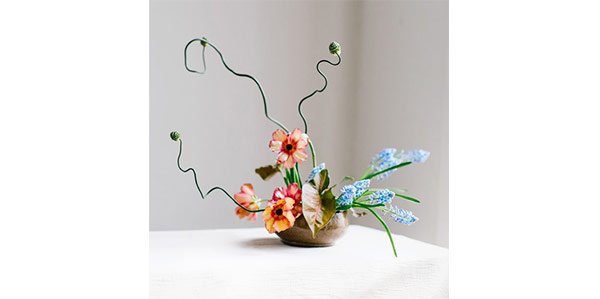
“Never think that the last thing the world needs is another arrangement of flowers. As Randolph Waldo Emerson once said, 'Flowers...are a proud assertion that a ray of beauty out values all the utilities of the world.'"
Except from Cultivated: The Elements of Floral Style by Christin Geall


